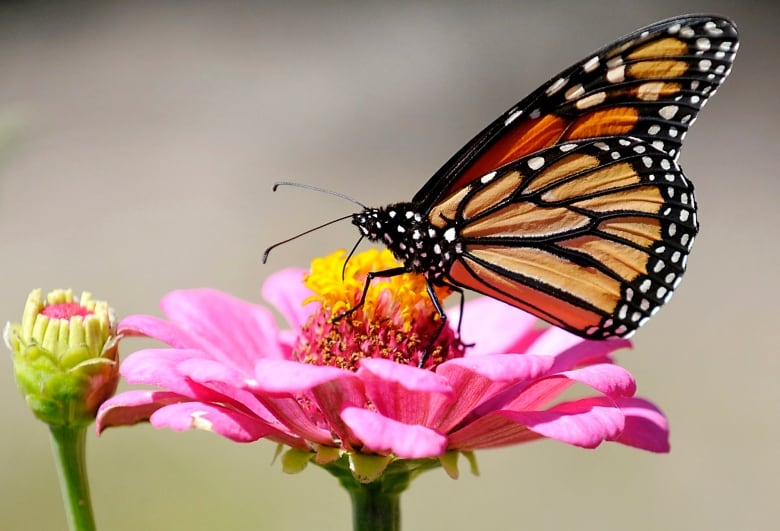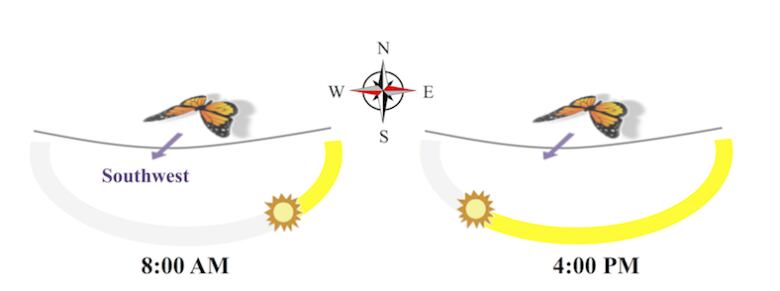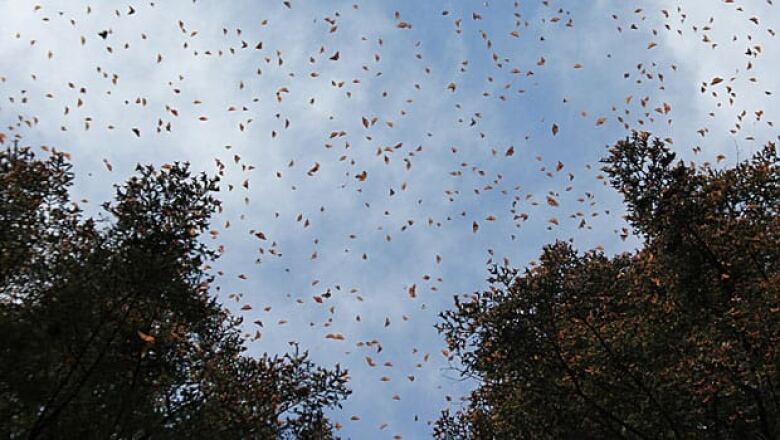How monarch butterflies' compass is wired for Canada-Mexico migration
Researchers decipher how monarch's brain circuit uses signals from its eyes and 'clock' in antennae
How do you build a biological compass small and reliable enough to direct a monarch butterfly on its amazing 4,500-kilometre migration from Canada to Mexico each fall? Scientists say they think they've figured that out.
Researchers at the University of Washington and the University of Massachusetts say they've figured out the details of how the monarch's compass is wired within its brain. They published their results in the journal Cell Reports this week.

Canadian scientists had previously shown that monarchs navigate using nothing but a built-in compass calibrated to the sun's position in the sky at different times of day no magnet required.

Eli Shlizerman, an assistant professor in applied mathematics and electrical engineering at the University of Washington, wanted to know the biological details.
"We wanted to understand how the monarch is processing these different types of information to yield this constant behaviour flying southwest each fall," he said in anews release.
The first step is monitoring the sun's position in the sky, something the monarch obviously does with its eyes. The second step is to match that up with the time of day in order to figure out which direction is southwest something the monarch does with its antennae.
Steven Reppert, neurobiologist at a University of Massachussetts who co-authored the paper, showed that by recording signals from the nerves in the monarchs' antennae as they transmitted those to the brain.
Using that information, Shlizerman figured out the layout of a brain circuit that could use those signals to control the butterfly's direction.He tested the model by simulating what would happen if a monarch had to go off-course because of a gust of wind or an obstacle.

He found that it produced a path thatwas consistent with what monarchs actually do they often take a long, meandering route to get back on course. Shlizerman's model predicts that way the navigation system is wired in the butterfly's brain makes it impossible to do a shorter turn.
The circuit's design also makes it easy for monarchs to reverse direction and fly northeast each spring. It takes them four generations to make it back to Canada from Mexico.
However, the researchers say that additional studies are still needed to confirm whether the model is really consistent with how the monarch's brain, body and behaviour actually work.













_(720p).jpg)


 OFFICIAL HD MUSIC VIDEO.jpg)
.jpg)



























































































